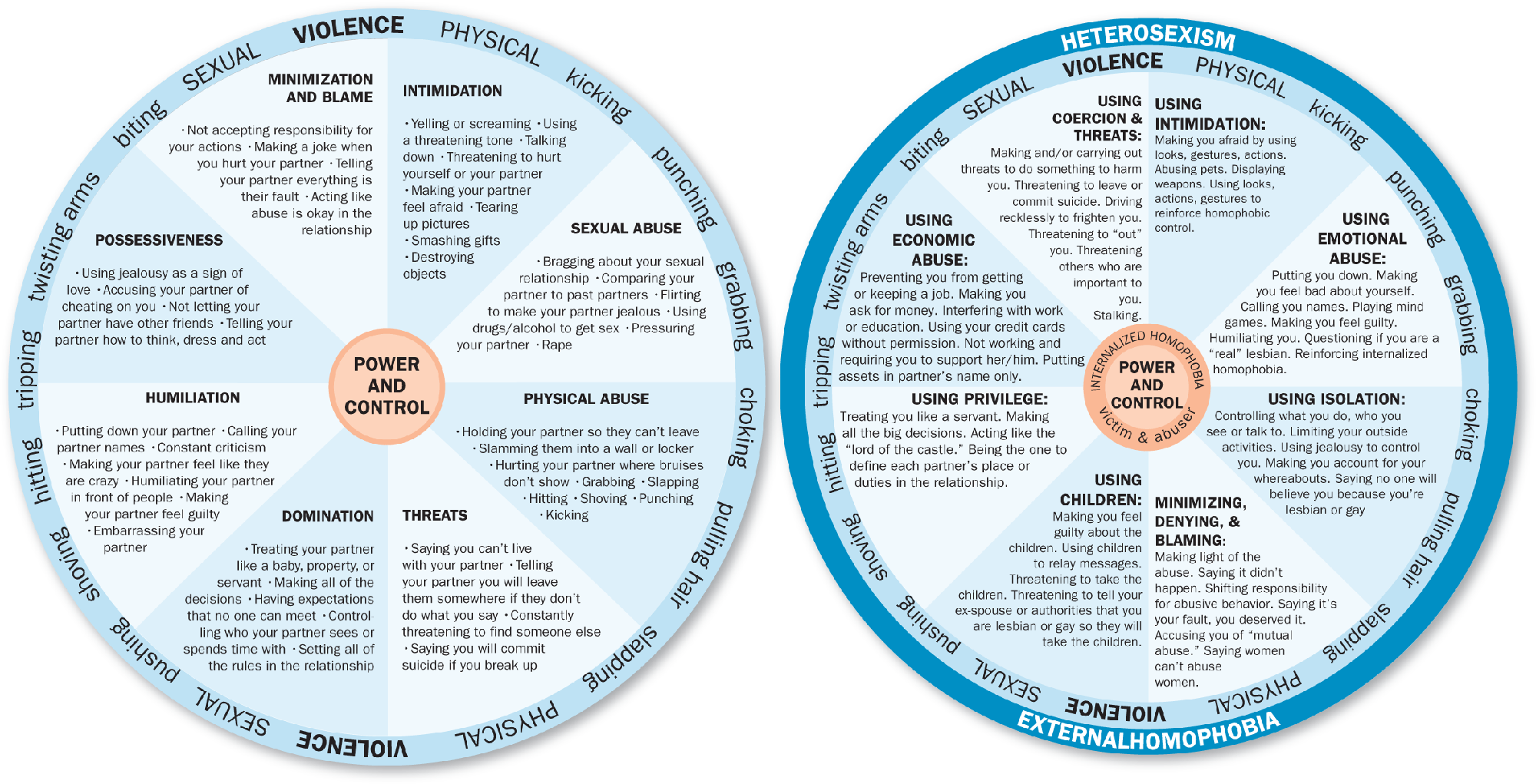Abusive and Violent Relationships
-
4.6Explain the types of relationship abuse, describe the cycle of violence, and discuss that characterizes of an abusive relationship and its effects on the survivors.
Intimate partner abuse and violence comprise what might be called the dark side of love and intimacy, and unfortunately, they are far more common that most people believe. That is why these topics are being discussed here, in the relationships chapter, in greater detail than in Chapter 13, “Sexual Aggression and Violence,” which is where we discuss rape, child sexual abuse, and sexual harassment. Everyone needs to be aware of these dangerous and destructive aspects of relationships in order to increase their own chances of recognizing and avoiding them and to be able to help those they care about who may not perceive the risks in which they find themselves.
People who have never experienced an abusive or violent relationship find it nearly impossible to imagine how a connection that seems to begin with love and happiness can transform into horror, pain, and despair. As noted earlier, violence between partners not only destroys their relationship, but is also devastating to the victim’s emotional wellbeing. This form of abuse and violence most commonly entails a male abuser and a female victim. However, it is very important to be aware that intimate partner abuse and violence may involve a female abuser and male victim and also exists in same-sex relationships as illustrated in Figure 4.3.
Figure 4.3
The Power and Control Wheels of Abusive Relationships

When one person in a relationship repeatedly scares, hurts, puts down, or injures the other person, it is abuse. These Power and Control Wheels illustrate examples of these forms of abuse in heterosexual and same-sex relationships. Remember, abuse is much more than grabbing, slapping, or hitting.
SOURCE: “Power & Control in Dating Relationships” and “Lesbian/Gay Power and Control Wheel” as published by Domestic Abuse Intervention Programs. Reprinted by permission of DAIP, 202 E. Superior St., Duluth, MN 55802.

Relationship abuse may include physical violence, intimidation, or restraint, or it may involve verbal or emotional attacks such as threatening, ridiculing, or humiliating. The abuser’s goal is to gain complete control over the partner and the relationship.
If you or someone you know is caught in the trap of a violent relationship, help is available. Anyone in North America may call the National Domestic Violence Hotline (NDVH) at (800) 799-SAFE (799-7233) or go to their website at www.thehotline.org. The hotline is staffed 24/7/365 by trained counselors who can provide crisis assistance and information about local shelters, legal assistance, health care resources, and counseling. The NDVH may be contacted via e-mail at ndvh@ndvh.org (with access to translators for 140 languages).